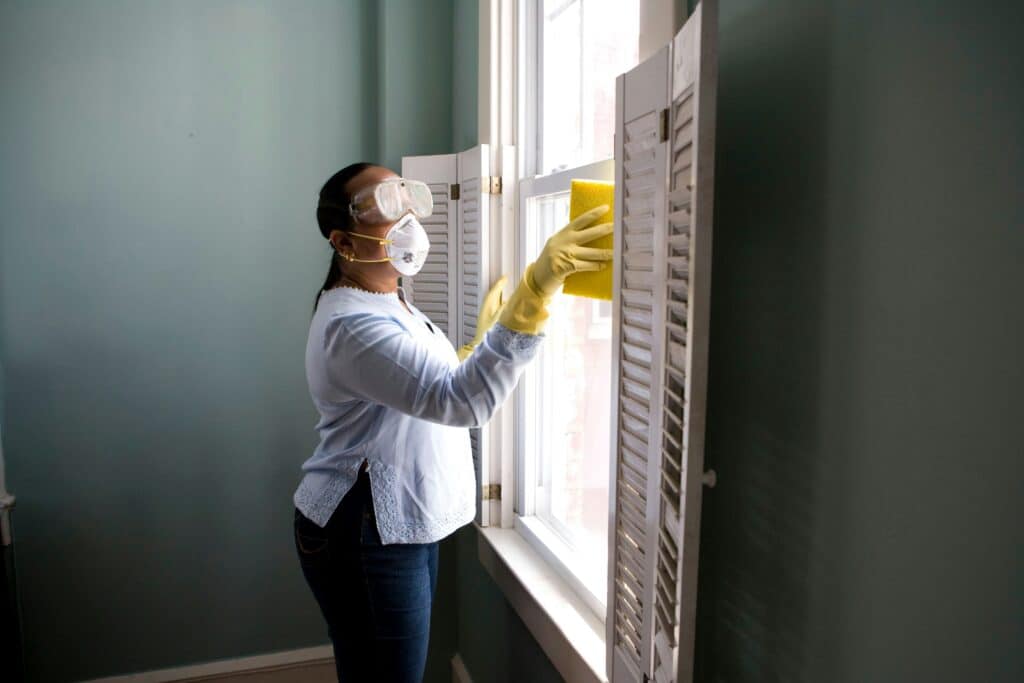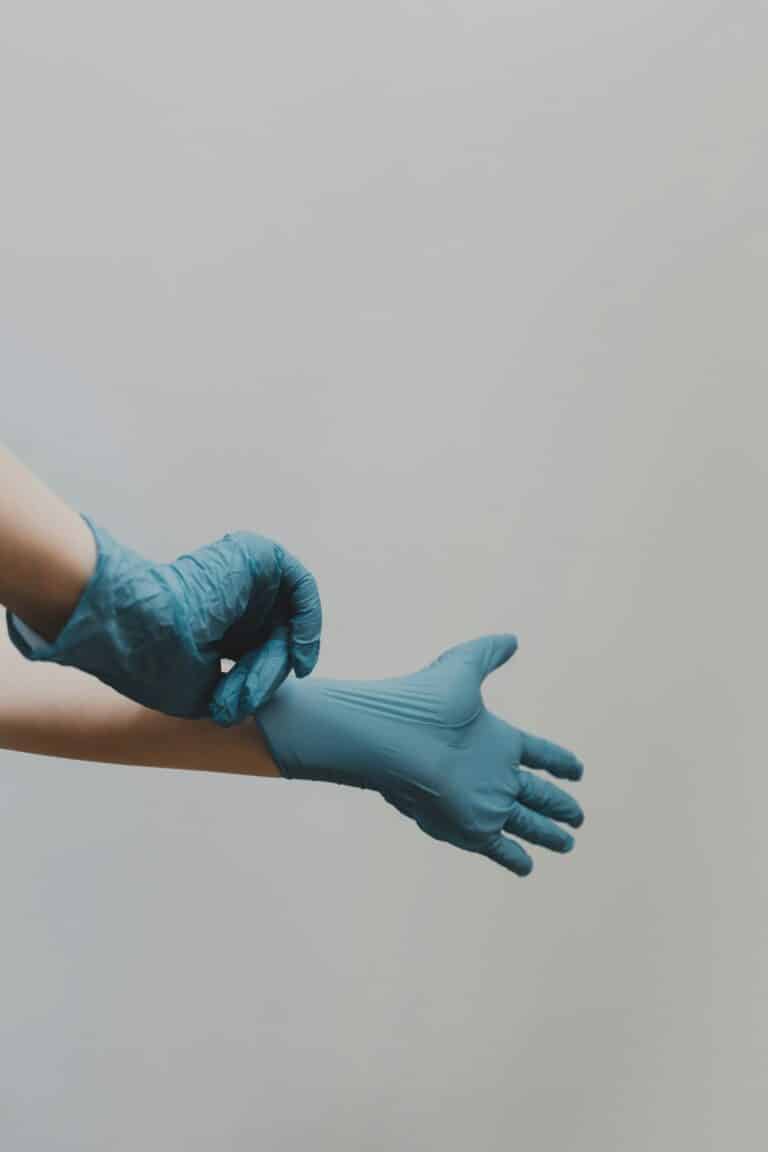The need to adapt and evolve with our environment has made us reevaluate how we live and the products we use. In an era where sustainability is paramount, we need to look at the smallest details of our lives, including cleaning our homes. That’s where eco-friendly DIY cleaning techniques come into play.

Going green and clean can significantly boost your home’s efficiency, save you money, and most importantly, reduce your environmental footprint. This shift does not happen overnight, but with consistent steps and a commitment to eco-conscious living, anyone can make a profound impact. But, where do you start? The answer is right at home. 🏠
Cleaning products might seem innocent, but many are packed with harmful chemicals that negatively affect the environment and our health. It’s time we revisited our cleaning routines and identified more sustainable options. In this article, we’ll explore eco-friendly DIY cleaning techniques that are simple to implement and amazingly effective.
What’s the deal with conventional cleaning products?
Most conventional cleaning products have a dark side. They contain a cocktail of chemicals that can be harmful to our health and the environment. Ingredients like phthalates, perchloroethylene, triclosan, and ammonia are common in these products and are known to cause various health issues. Not to mention, these chemicals can contaminate our water sources, endanger wildlife, and contribute to air pollution when released into the environment. 💧
Switching to eco-friendly DIY cleaning techniques eliminates these harmful substances from your cleaning routine, making your home a healthier place to live and reducing your environmental impact. So, are you ready to make a change? Let’s dive in!
A sneak peek into the eco-friendly cleaning techniques we’ll cover
DIY cleaning techniques do not require complex ingredients or processes. Most of the time, they involve everyday items you likely already have in your pantry. Common ingredients include baking soda, white vinegar, lemon, and essential oils. 🍋 Not only are these items affordable and accessible, but they are also incredibly versatile and effective for various cleaning tasks.
Throughout this comprehensive guide, we’ll discuss techniques to clean various parts of your home, from the kitchen to the bathroom, and even your outdoor spaces. We’ll look at how to create DIY cleaning solutions, how to use them effectively, and tips for enhancing their cleaning power. Plus, we’ll share some additional advice on maintaining a clean and eco-friendly home.
Whether you’re a seasoned eco-warrior or just starting your green journey, this guide will provide you with the knowledge and confidence to transform your cleaning routine into one that aligns with your values and respects our planet. 🌱 Let’s embrace a cleaner, greener future together!
Are you ready to start your eco-friendly cleaning journey?
This transformation may seem daunting at first, but remember, every small step towards a greener and cleaner home makes a significant difference. With this guide, you’ll learn that going green doesn’t mean compromising on cleanliness or convenience. Instead, it’s about making mindful choices and using natural ingredients that are just as effective, if not more so, than their chemical counterparts.
So, are you ready to go green and boost your home’s efficiency with eco-friendly DIY cleaning techniques? If your answer is a resounding “Yes!”, then let’s roll up our sleeves and get started. 🌿
The Essence of Going Green: Understanding Eco-Friendly Cleaning
As society continues to evolve, there is a growing awareness of the critical role each of us plays in preserving our environment. This evolution has led to an influx of eco-friendly practices, a prime example of which is “green cleaning.” In essence, green cleaning implies using cleaning methods and products that are environmentally friendly. These methods are designed to preserve human health and environmental quality. Unlike traditional cleaning methods, green cleaning products and techniques don’t utilize harsh chemicals that can harm the environment and potentially your health. This article will guide you through the various ways you can boost your home’s efficiency with eco-friendly DIY cleaning techniques.
As Rodrigo Almeida, I have a decade-long experience in writing technical articles, particularly in the field of IT and Engineering. My aim is to use my specialized knowledge to break down complex information into comprehensible language. With this, I hope to guide you effectively on how to transform your home into a green and clean haven.
To get a clear picture of why green cleaning is gaining momentum, we must first compare it to traditional cleaning methods. The table below gives an overview of the differences between these two cleaning techniques.
| Traditional Cleaning | Green Cleaning |
|---|---|
| Uses chemicals that can harm the environment and human health | Employs eco-friendly products that are safe for the environment and human health |
| Focuses on surface cleanliness, which can neglect underlying issues | Focuses on overall cleanliness and health, tackling both surface and underlying issues |
| Often cheaper upfront but may lead to health and environmental costs in the long run | May be more expensive upfront but saves on health and environmental costs in the long run |
DIY Eco-Friendly Cleaning Techniques: A Step-by-Step Guide
Ready to turn your home into an eco-friendly sanctuary? Here are some simple, cost-effective DIY techniques to get you started. These methods don’t require any technical know-how and can be implemented using everyday household items.
1. Baking Soda and Vinegar: A Powerful Combo
Baking soda and vinegar are a dynamic duo when it comes to cleaning. Not only are they safe and environmentally friendly, but they are also highly effective in removing stains and eliminating odors. For instance, you can create a mixture of baking soda and vinegar to unclog drains, clean kitchen surfaces, and freshen up your carpets.
To discover more about how to use this powerful combo in your home, check out the video “Baking Soda and Vinegar Cleaning Tips” by Clean My Space. This video is packed with practical tips and demonstrations on how to utilize these two ingredients effectively.
2. Lemon and Salt: The Natural Scrubber
Lemons have a natural acidity that works wonders in breaking down grime and dirt, while salt acts as a gentle scrubber. This combination is particularly effective for hard surfaces such as stovetops and cutting boards. All you need to do is sprinkle some salt on the surface, squeeze the lemon juice, and scrub away!
For more tips on how to use lemon and salt in your cleaning routine, watch the video “Cleaning with Lemon and Salt” by Blossom. This video provides a step-by-step guide on how to incorporate these natural ingredients into your cleaning routine.
Benefits of Eco-Friendly Cleaning: Why Go Green?
Having explored various DIY green cleaning techniques, let’s delve into the reasons why adopting such practices can be beneficial for your home and the environment.
Firstly, eco-friendly cleaning techniques are healthier for you and your family. Traditional cleaning products often contain chemicals that can cause health issues, including allergies and respiratory problems. By opting for natural cleaning methods, you can eliminate these risks and create a healthier living environment.
Secondly, green cleaning is better for the environment. Most traditional cleaning products are not biodegradable and can contribute to water and air pollution. In contrast, green cleaning methods utilize eco-friendly products that are biodegradable and do not harm the environment. By adopting green cleaning practices, you can reduce your environmental footprint and contribute to a more sustainable future.
To get a better understanding of the benefits of green cleaning, I recommend the video “Why Go Green? The Importance of Eco-Friendly Cleaning” by Good Housekeeping. This video highlights the benefits of green cleaning and explains why it’s a worthy practice to adopt.
Remember, every small step towards a greener and cleaner home makes a significant difference. By adopting these eco-friendly cleaning techniques, you can create a healthier living environment for your family and play your part in preserving our environment. Start your green cleaning journey today and experience the difference for yourself!
Conclusion
In conclusion, the purpose of this article was to provide a comprehensive overview of the complex yet fascinating world of technology and engineering. Our journey through the intricate realms of IT and software engineering has shed light on many crucial concepts and intricate details, which often go unnoticed but play an instrumental role in shaping the fabric of our digital society.
From exploring the intricacies of software development to delving into the depths of Information Technology, the knowledge imparted in this article provides a fundamental understanding of these specialized fields. Understanding these concepts not only equips you with the necessary tools to navigate today’s digital landscape, but it also empowers you to innovate and contribute to the ever-evolving world of technology.
The significance of this subject matter is underscored by the widespread application and influence of IT and engineering in our daily lives. With the increasing integration of technology in various sectors, having a sound understanding of these areas is indispensable for both individuals and businesses alike.
In the same breath, the field of technical writing has emerged as a critical skill, particularly for those involved in the tech industry. It provides a bridge that connects complex technical jargon with the layman’s language, thus making technology more accessible and comprehensible to the masses. As a technical writer, it has been my endeavor to break down these complex subjects into simple, digestible pieces of information.
Engaging with this article, we hope, has not just enriched your knowledge base, but has also stimulated your interest in the domain of IT and software engineering. However, remember that the field of technology is continually evolving, and it’s essential to keep up with the latest trends and advancements.
For further reading and exploration of these subjects, feel free to visit these recommended resources:
1. [The Institute of Electrical and Electronics Engineers](https://www.ieee.org/)
2. [The Association for Computing Machinery](https://www.acm.org/)
3. [The Software Engineering Institute](https://www.sei.cmu.edu/)
I encourage you to share your thoughts, ideas, and experiences in the comments section below. Whether you’re a tech enthusiast, a student, a professional, or someone just getting started in the field, your perspective can add great value to this discussion.
Please feel free to share this article with your friends, colleagues, or anyone who might find this information beneficial. After all, sharing knowledge is one way we can all grow together in this digital age. Remember to apply what you’ve learned, and let’s continue to explore the fascinating world of technology and engineering.
Let’s keep the discussion alive. Stay curious and keep learning! 😊
Remember, “Knowledge is power, but only wisdom is liberty.” – Will Durant
Stay tuned for more insightful articles in the future.
Happy learning! 😊


